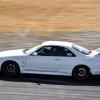Time Attack
Announcements
-
Similar Content
-
Latest Posts
-
A BOV that both has an external vent and a return pipe connection is a hybrid BOV. I wasn't talking about one of those. If you bought one of those, I'd instead just buy a return only one. I was talking about a BOV that only vents. I mean doing something, yourself, to restrict the outlet. Jamming something in there, welding something on with a ball valve on it so you can adjust it, etc etc.
-
Got my NSW SAU card this week with the new Lanyard ,Looks cool . I still have my old SAU Lanyard from 2004 , but i'll use the new one. I'll try to make the meeting on 17th , hopefully we will get a few people there.
-
Guys , just renewed my mine with Shannon's this week , I updated them that I had a Fujitsbo exhaust installed , so they did increase the cost by $200 , but still good for about $2400 for the year. Very helpful team at Shannon's , when I originally reached out to them last year they hadn't had a 400r , but took all my details and were happy to offer me a policy. it a bit high but that the price you pay to get an Import.
-
Be great to get some activity in this thread again.





Recommended Posts
Create an account or sign in to comment
You need to be a member in order to leave a comment
Create an account
Sign up for a new account in our community. It's easy!
Register a new accountSign in
Already have an account? Sign in here.
Sign In Now